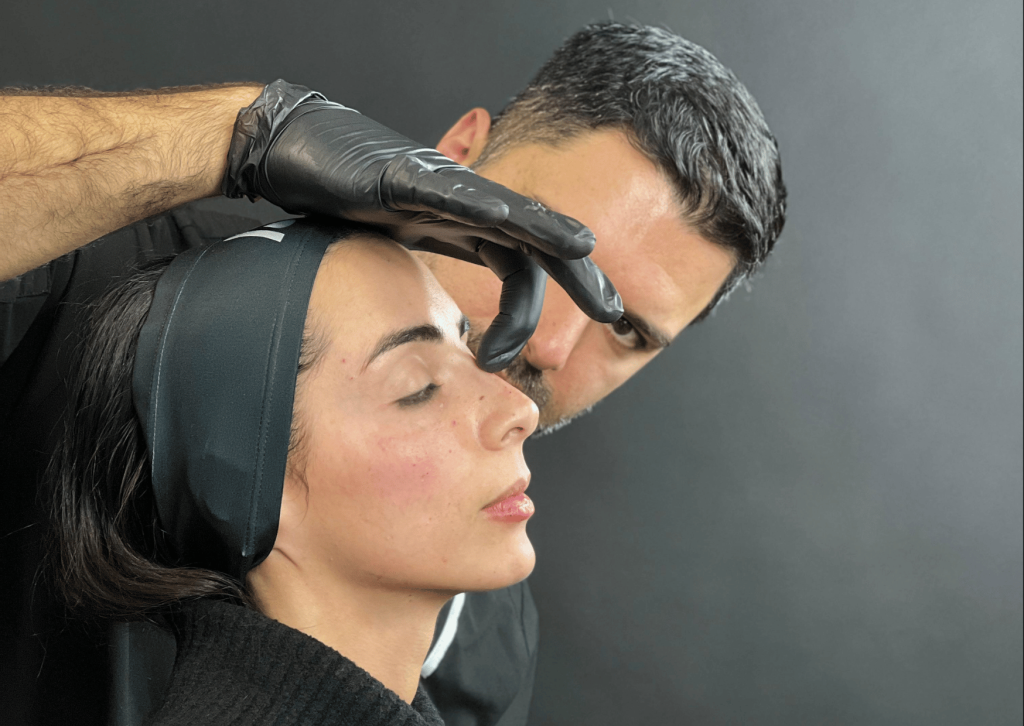
When considering aesthetic enhancements to the nose, two popular options often come into focus: nose fillers (also known as non-surgical rhinoplasty) and surgical rhinoplasty. Both procedures offer ways to improve the appearance of the nose, but they differ significantly in terms of method, results, and longevity. Dr Ayad Harb, a leading aesthetic and reconstructive surgeon and the founder of SRGN Clinic, frequently advises patients on which option might be better suited to their goals and expectations.
In this blog post, we’ll explore the differences between nose fillers and rhinoplasty, helping you determine which might be the better choice for your individual needs.
Nose fillers, also known as liquid rhinoplasty or non-surgical rhinoplasty, involve the use of dermal fillers to reshape and contour the nose without surgery. This minimally invasive procedure can address several concerns, such as smoothing out bumps on the nasal bridge, refining the tip, and creating a more balanced profile.
How It Works: During the procedure, dermal fillers—typically made from hyaluronic acid—are injected into specific areas of the nose to achieve the desired shape. The procedure usually takes about 15 to 30 minutes and requires little to no downtime, making it an attractive option for those seeking quick results with minimal disruption to their daily lives.
Results and Longevity: The results from nose fillers are immediate, with the full effect visible as soon as the procedure is completed. However, these results are temporary, typically lasting between 6 to 18 months, depending on the type of filler used and the individual’s metabolism. Touch-ups are required to maintain the effect over time.
Rhinoplasty, often referred to as a “nose job,” is a surgical procedure designed to permanently alter the shape, size, or function of the nose. Unlike nose fillers, rhinoplasty can address both aesthetic concerns and functional issues, such as breathing difficulties caused by structural abnormalities.
How It Works: Rhinoplasty is performed under anaesthesia and involves making incisions to access the bone and cartilage of the nose. These structures are then reshaped or repositioned to achieve the desired outcome. Rhinoplasty can be performed using an open technique (with a small external incision) or a closed technique (with incisions inside the nostrils).
Results and Longevity: The results of rhinoplasty are permanent, providing a lifelong solution to nasal concerns. While initial swelling may take weeks to subside, the final results of rhinoplasty can take up to a year to fully manifest as the nose heals and settles into its new shape. Once healed, the results are durable and do not require further maintenance.
The choice between nose filler and rhinoplasty depends on several factors, including your aesthetic goals, budget, and tolerance for downtime.
Aesthetic Goals: If you are looking for minor adjustments, such as smoothing out a bump or refining the tip of your nose, nose fillers may be sufficient. However, if you require more significant changes, such as reducing the size of the nose or correcting functional issues, rhinoplasty is the better option. Rhinoplasty offers a comprehensive solution that fillers simply cannot match.
Longevity: Nose fillers provide temporary results, which is a benefit for those who are unsure about committing to permanent changes. However, if you are looking for a one-time solution with lasting results, rhinoplasty is the better choice. It eliminates the need for ongoing treatments and offers a more definitive outcome.
Recovery and Downtime: Nose fillers require minimal downtime, with most patients returning to their regular activities immediately after the procedure. Rhinoplasty, on the other hand, involves a longer recovery period, with most patients needing about one to two weeks off work and several months for full recovery. If you prefer a quick recovery with little disruption, nose fillers may be more appealing.
Cost Considerations: Nose fillers are generally less expensive than rhinoplasty, making them a more accessible option for those on a tighter budget. However, because fillers require regular maintenance, the cost can add up over time. Rhinoplasty, while more expensive upfront, is a one-time investment that does not require ongoing treatment.
Reversibility: One advantage of nose fillers is that they are reversible. If you are unhappy with the results, the filler can be dissolved using an enzyme called hyaluronidase. Rhinoplasty, however, is permanent, and while revisions are possible, they involve additional surgery.
Deciding between nose fillers and rhinoplasty is a personal choice that depends on your specific needs and preferences. Nose fillers offer a non-surgical, temporary solution with minimal downtime, making them ideal for those seeking subtle changes or who are hesitant about surgery. Rhinoplasty, on the other hand, provides a permanent and more comprehensive solution, addressing both aesthetic and functional concerns.
Dr Ayad Harb, founder of SRGN Clinic, is highly experienced in both nose fillers and rhinoplasty. He offers personalised consultations to help patients determine the best approach for their unique goals. Whether you are seeking a quick fix or a long-term solution, Dr Harb can guide you through the options and help you achieve the best possible outcome.
Rhinoplasty is ideal for permanent changes, while fillers suit temporary, non-invasive adjustments. Your choice depends on your goals.
Fillers are temporary, and are less effective for major structural changes.
Nose fillers are better for subtle reshaping, while threads provide more lift and structure. The best option depends on your desired outcome.